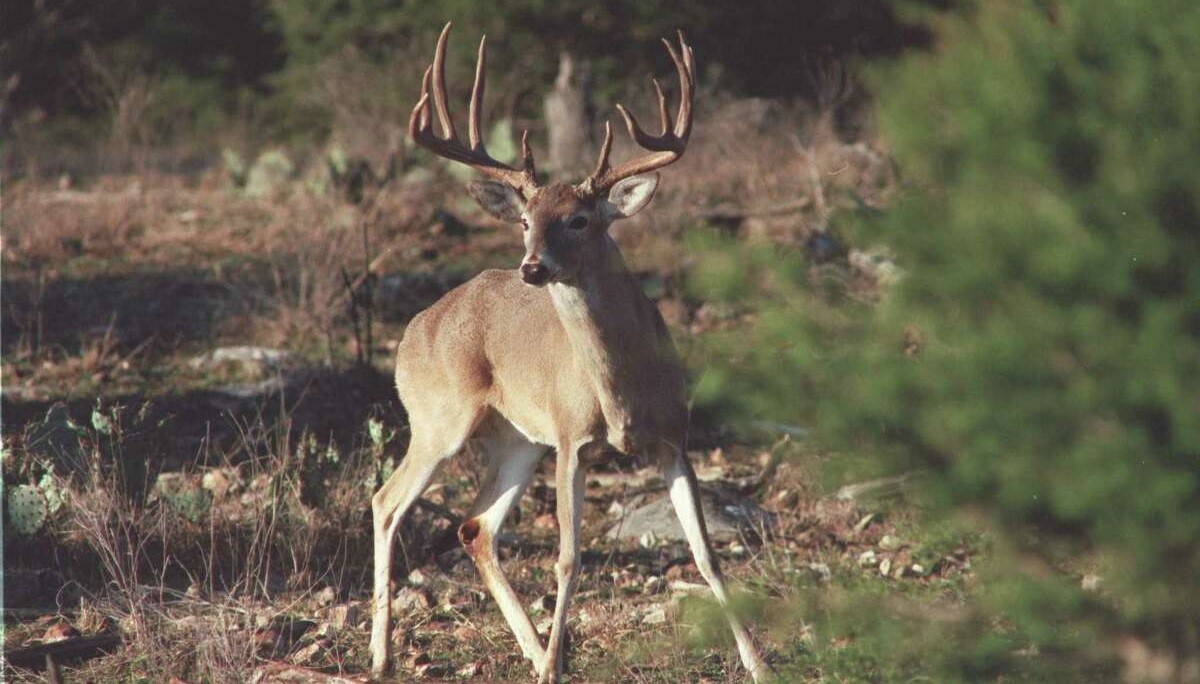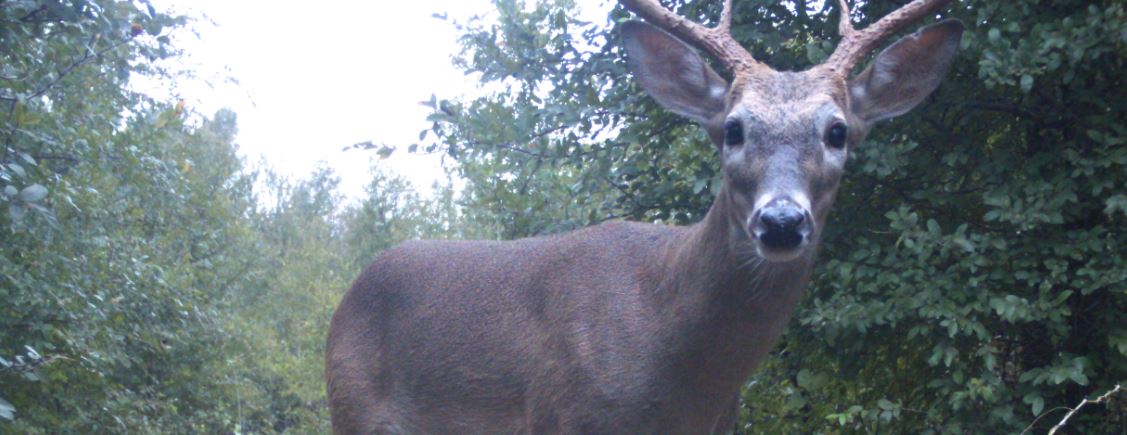Healthy Deer Population?
Question: “We estimated the deer density on on our property to be 1 deer for every 5 acres. Not sure if this is ideal because we do feed A LOT of protein pellets. As far as habitat, we have a ton of tree and brush cover with a good variety of browse plants for whitetail. Over the past two years we are harvesting mature bucks that weigh 190-220 pounds on the hoof. I know some other landowners involved with whitetail management and they say the ideal deer density for their property is somewhere around 1 deer for every 9 to 12 acres.
I’m concerned that the number of deer found on our property may be too high, although it does not appear that is the case since habitat looks good and deer seem to be big and healthy. I’m just afraid that maybe we are missing the forest because of the trees. What is the maximum number of deer per acre you would recommend for a property?”

How Many Deer for a Healthy Population?
Deer Management: A deer for every 5 acres is a high deer density for any whitetail management program. No doubt about it. My guess is that the habitat appears healthy to the untrained eye, but it’s not flourishing by any means. There are a lot of plants that deer do not like to eat. and these are the ones doing well.
The browse plants that deer prefer to eat are undoubtedly under heavy browsing pressure. They will show signs of overuse. This is not good for the plants found on your land, the deer found living there, or the property itself. Keeping the “right” deer population on your place is critically important. So how many deer for a healthy population? That is going to depend on the property.
Proper Deer Density Does Not Include Feed
If whitetail had a choice they would prefer to eat natural forbs. Forbs are herbaceous broadleaf plants. Think weeds and wildflowers. They are highly palatable, highly digestible and full of protein. Unfortunately, forbs are not available throughout the year. Forbs are most common during the spring and fall.
Browse plants comprise the bulk of their annual diet, typically making up at least 50 to 80 percent of intake. Browse consists of the stems and leaves of woody plants. Think trees, brush and vines. Even when supplemental forage is provided, be it food plots or protein pellets or cottonseed, whitetail deer still eat browse plants.
The intensive supplemental feeding program on the property is the primary reason the deer on your place still look as good. Many of the native plants on the property can do okay with above average rainfall. The problem is that things do not stay above average. Rainfall is Texas does not stay above average.
Research has found that white-tailed deer rely heavily on native trees and shrubs for food, even when provided with all-they-can-eat supplements. With a deer density of 1 per 5 acres, there is little to no tree or brush regeneration. Any seed that sprouts two green leaves is quickly eaten by deer. This may not seem like a big deal, but it risks the long-term health of the property if not remedied.
How Many Deer? Survey Data Needed
In real estate it’s all about location. With whitetail deer management the mantra is habitat, habitat, and habitat! Keep the deer population at the appropriate level for your property and things will work in your favor. Maintaining the number of deer at the “brink of disaster” means it will not take much for things to work against you. Severe drought will hit the plants found on your property, as well as your wallet, hard.
Before going further, it’s important to point out that there are several ways to estimate deer density. There are many types of surveys that can be performed to estimated deer populations. Although any method can work, better estimates can be made when two or more survey methods are used together. Get comfortable with survey techniques before estimating the quantity of deer found on your property. This information will tell you how many deer you have. Then you can start managing deer numbers.
Although you stated that you have 1 deer for every 5 acres, the real number is probably even higher. I bet it’s 1 deer for every 4.5 acres, or 4 acres or even lower. Surveys generally tend to underestimate actual deer numbers. Population estimates are based on the number of animals that you see. The truth is you miss some, even when they are there to be seen during the survey. Once you extrapolate numbers, the percentage of animals that you missed becomes a larger, real number of deer. Have faith in the deer population estimate to take appropriate actions.
Habitat Management is Deer Management
How many deer should you have for a healthy deer population? I don’t know. The reason is because carrying capacity varies from area to area and even from ranch to ranch. Not all land is created equal. Some properties have more cover, some are more open. Even neighboring landowners can have different carrying capacity when it comes to proper deer density because of variations in natural habitat and land management activities that affect habitat. Livestock grazing practices must also be considered.
Soils vary from property to property, with most properties having a variety of soil types found on them. Soil and rainfall ultimately determine the forage production and deer carrying capacity for a property. Deer populations will be healthy when kept at the right level. This means higher reproduction (more fawns each year), larger body sizes, and better antler growth. For those reading along, if this does not sound like your property then you are doing it wrong.

Manage Deer Density for Long-Term Success
To often landowners will have a short-term view of deer management… How many deer can we shoot next year? How big will the bucks be next year? These are important questions, but real success in managing whitetail comes with a long-term view. The goal is ultimately to maintain a healthy deer herd full of healthy animals. Healthy deer produce more deer. Healthy bucks with some age on them produce bigger antlers. You will need reproduction to keep the cycle going.
Reproduction, in fact, is the key. Plant reproduction, that is. Without fresh, young plants replacing the old ones the property will begin to degrade. Newly sprouted plants are energy-rich foods for deer, but they will also replace the other plants of their species that die because of disease, drought or whatever. It’s important that there are not so many deer that all the newly sprouted plants are consumed. Some plants, like deer, need to get old. Habitat health is a good indicator of herd health.
While I do not know the exact right number of deer for your property, I do know that you need to find out what it is. My recommendation would be to contact a reputable deer biologist (state or private) in your area and give them a call. Often times they will give you a range, such as 10-12 acres per deer, based on the dominant plant communities in the ecoregion.
A local contact will likely know the general area or even the exact property and can offer good advice right over the phone. That is a starting point, but how many deer for a healthy population on your land? If you really want to get at the ideal deer density number, however, you need to invite them out and show them the habitat found on the property. Most state wildlife departments have experienced biologists that can assess your property for deer at no cost.